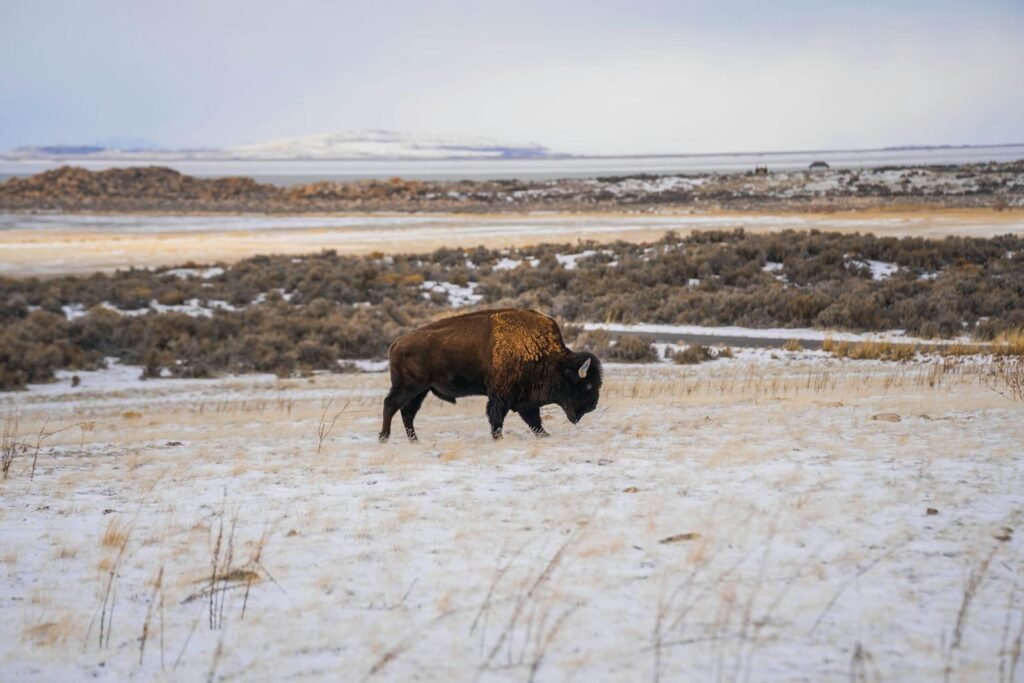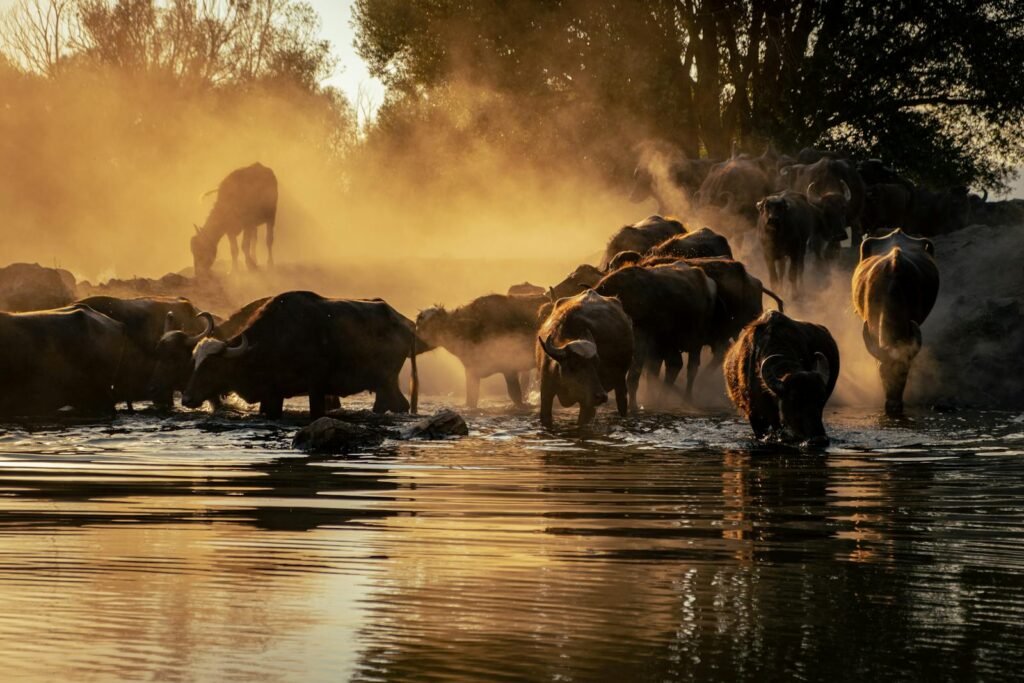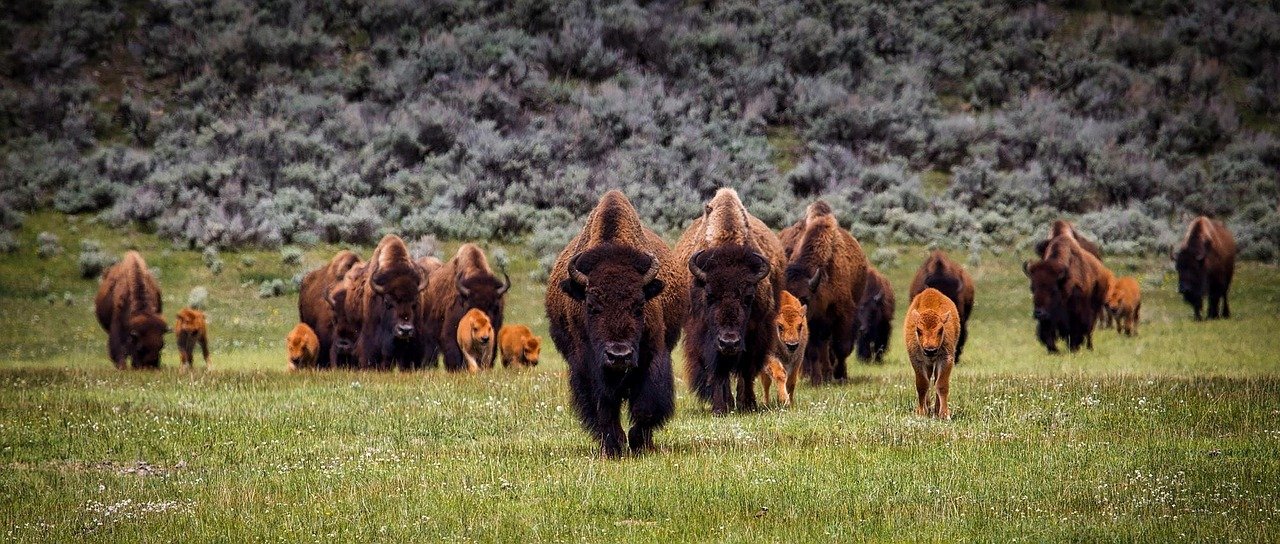Once nearly wiped from North America’s grasslands, the American bison is finally reclaiming its place—not only as a keystone species, but as a symbol of cultural resilience and ecological restoration. In a groundbreaking move, Colorado Governor Jared Polis has signed the “Protect Wild Bison” Act (SB25-053) into law, granting bison dual status as livestock and wildlife—a first for the state.
The new law empowers Colorado Parks and Wildlife (CPW) to manage bison as a big game species, ensuring stronger protections for free-roaming herds and opening the door to cooperative efforts across state lines and tribal lands.
“A bison treated as wildlife is a bison treated with the respect and care that it deserves,” said Michael Saul, director of Defenders of Wildlife’s Rockies & Plains program. “This achievement for our herds in Colorado honors our Indigenous communities and their relationship with this revered animal.”
A Shift in How Colorado Sees Its Bison

For the first time, bison in Colorado will be protected under wildlife statutes. That means it is now illegal to hunt or capture wild bison without proper authorization, and violators could face up to $100,000 in fines and a year in jail. The change addresses a critical legal gap, especially for herds that migrate across state borders.
The bill’s passage also aligns state law with the ecological reality that wild bison are more than livestock—they are ecosystem engineers that once shaped the entire prairie biome.
“This law ensures bison are not only protected but respected,” said Senator Jessie Danielson, who co-sponsored the bill. “Colorado is sending a message that we will not tolerate poaching or mistreatment of these iconic animals.”
Partnering With Indigenous Nations and Neighboring States

The legislation is a win not just for wildlife officials and conservationists, but also for Indigenous nations. The law facilitates collaboration with the Ute Mountain Ute and Southern Ute tribal governments, the Bureau of Land Management, and officials in Utah—where some bison herds naturally migrate across the border.
Bison now roaming places like the Soapstone Prairie Natural Area, the Rocky Mountain Arsenal National Wildlife Refuge, and Southern Plains Land Trust properties will benefit from CPW’s oversight, especially in areas of grassland health and disease control.
Programs like the Bison Conservation Transfer Program, founded by Defenders of Wildlife and other partners, will also be supported. This initiative relocates genetically pure Yellowstone bison to tribal lands, helping restore both populations and cultural traditions.
A Species on the Brink—Then a Comeback

At one point in the late 1800s, the bison population had plummeted from over 30 million to fewer than 1,000 animals. Decades of slaughter, habitat loss, and displacement left the species ecologically extinct—present, but unable to fulfill its historic role in grassland ecosystems.
Today, while captive and managed bison herds exist, truly wild populations remain rare. Colorado’s legislation helps bridge the gap between protection and restoration, offering a blueprint for other states.
“Colorado’s commitment to this species sets a precedent,” said a Defenders of Wildlife statement. “It’s not just about conserving a majestic animal—it’s about restoring an entire legacy.”
Looking Ahead

The Protect Wild Bison Act takes effect on January 1, 2026, giving agencies time to prepare and build collaborative frameworks. As the national mammal of the United States, the bison has always stood as a symbol of endurance. Now, thanks to Colorado’s bold step forward, that symbol has real protection behind it.
This legislation not only safeguards a species but also redefines how modern conservation can bridge ecological science with cultural respect. By honoring the bison’s historical role and partnering with Indigenous nations, Colorado is setting a precedent for how wildlife protection can also restore long-eroded connections to land, tradition, and identity.







